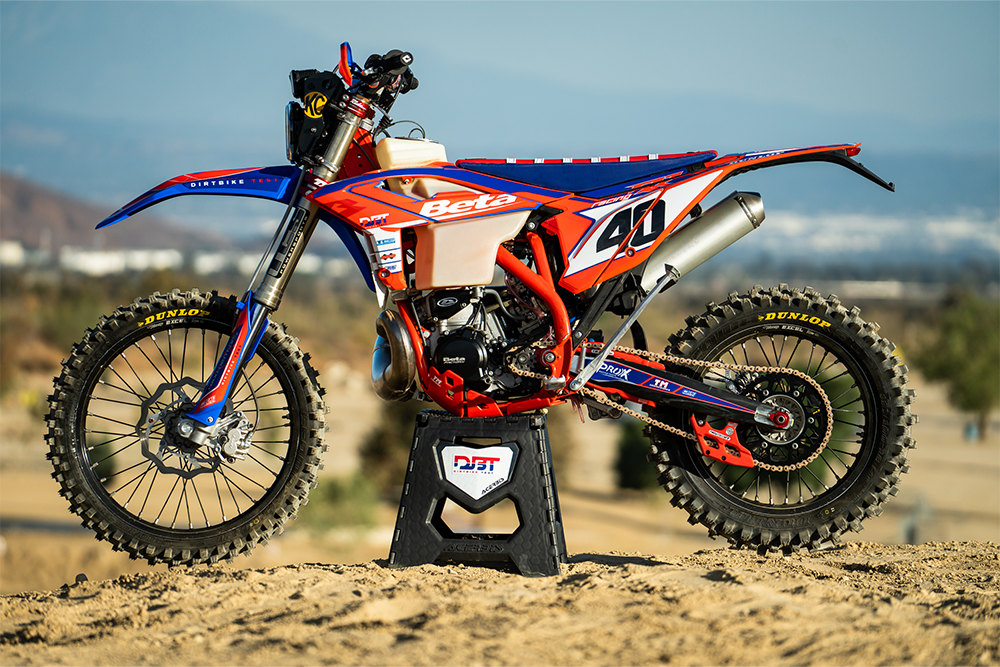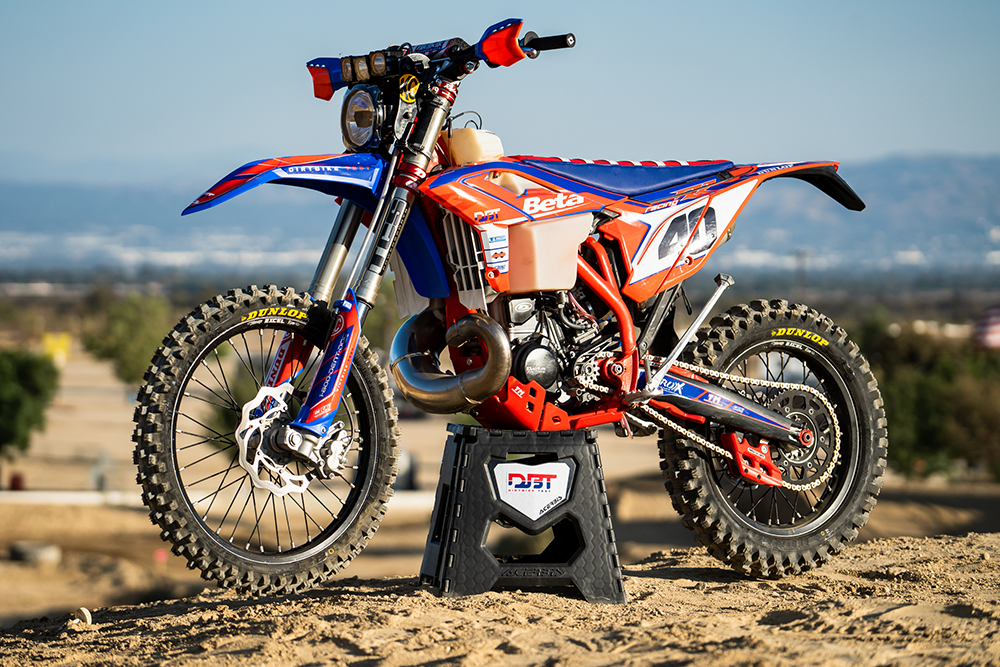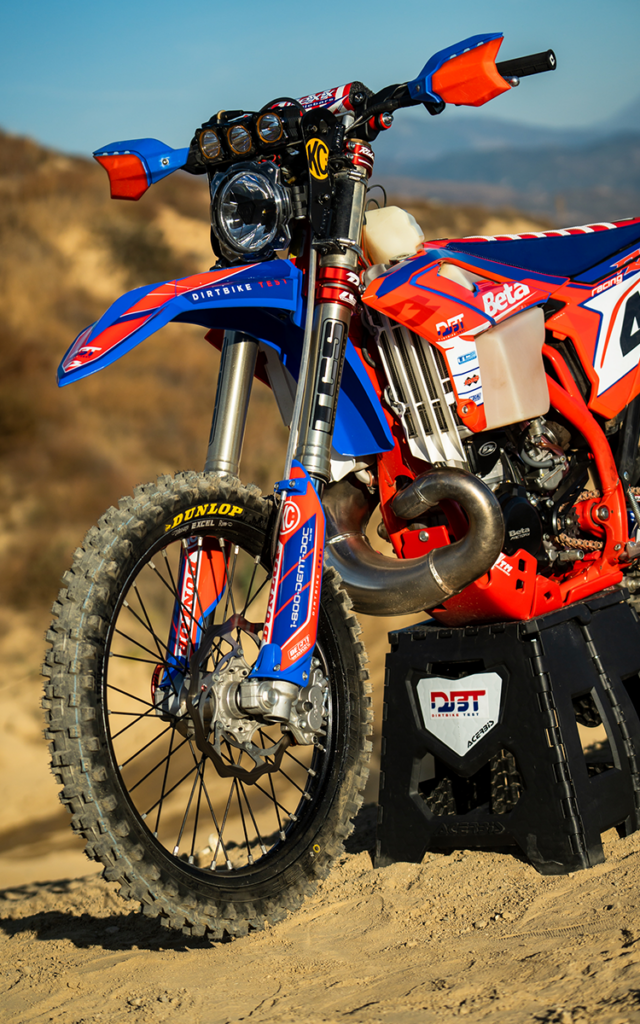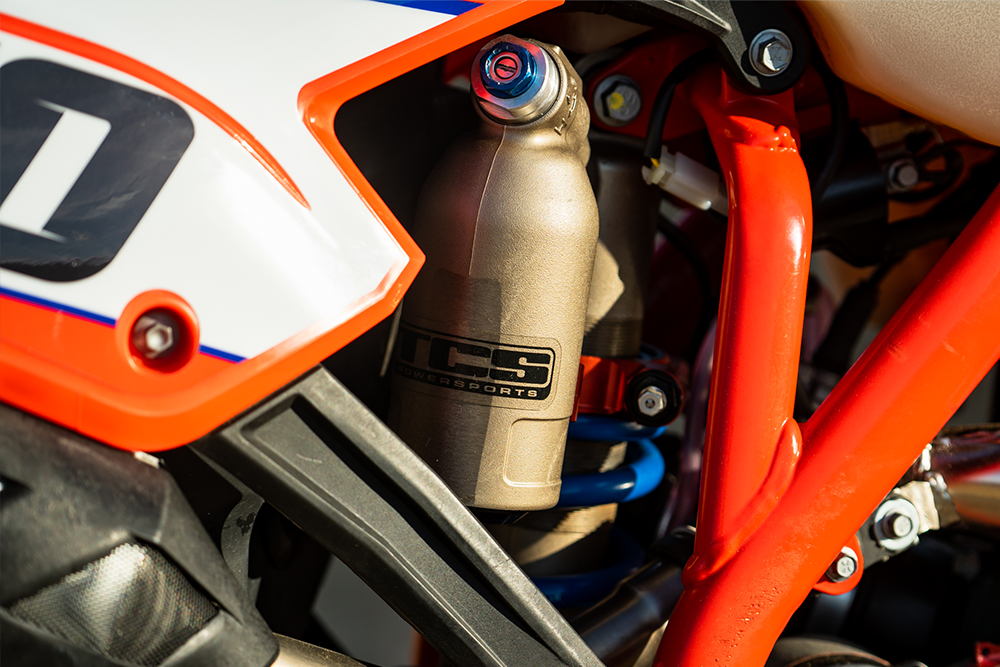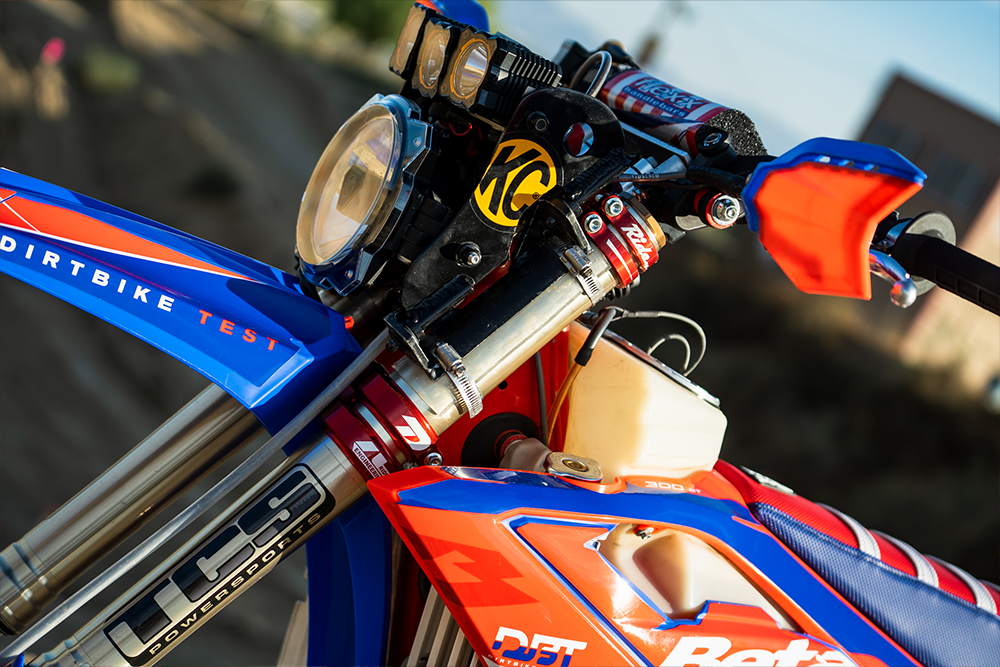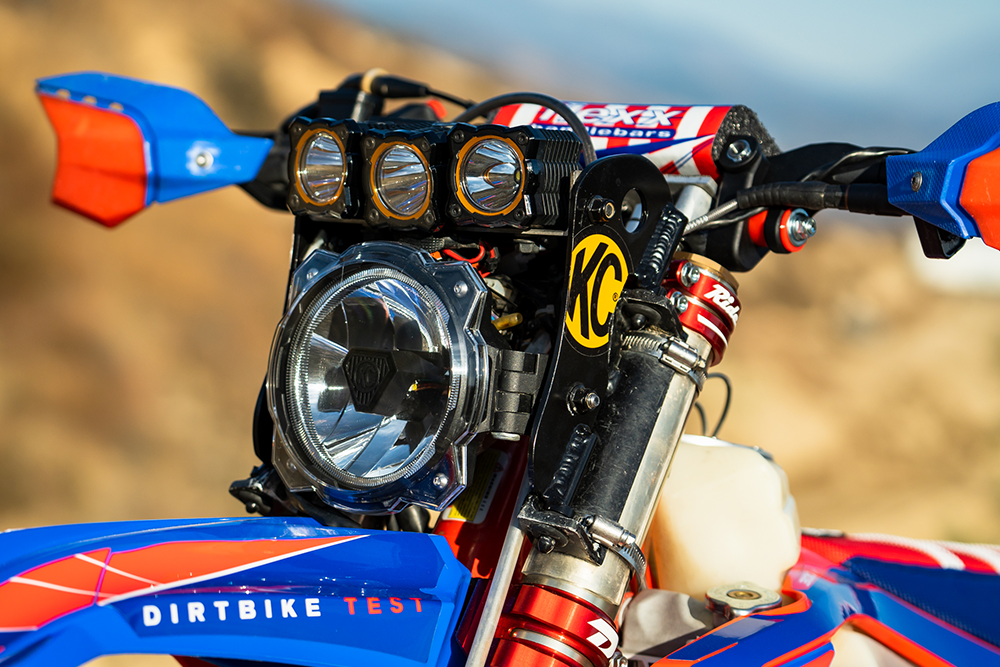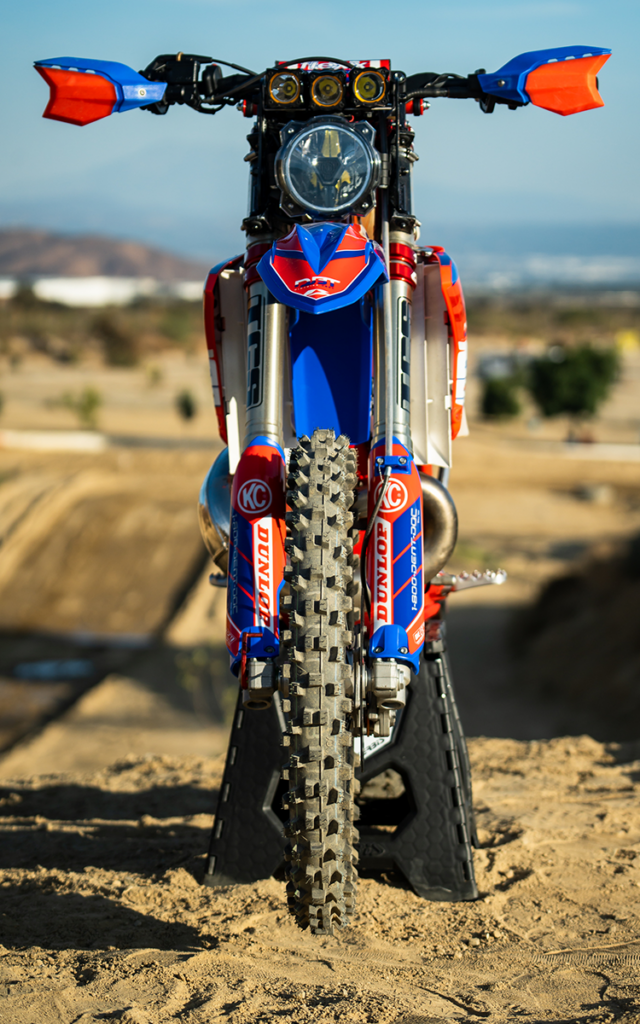2024 Beta 300RR Race Edition Build
Story by Brent Farrell, Photos by Trevor Hunter
One of our favorite ways to really figure out a bike is to race it at the annual 24 Hours of Glen Helen. It’s late in the year and to do it right, you have to spend months beforehand testing a bike in stock trim before trying various parts to change (and hopefully improve) the characteristics that aren’t as favorable. In addition, it requires input from multiple riders and the conditions on race day are varied and change drastically throughout the event. It gives us the ultimate opportunity to test performance as well as durability in both man and machine.
We’ve jumped around between several different bike displacements and brands over the past few years, and something us “veteran” riders always came back to was how much we enjoyed riding a Beta 250 RR Race Edition in 2021. It was considered one of the best and most universally appraised bikes the team has used in recent memory and is something that we’ve always wanted to revisit, albeit with a little more prep time and quite possibly a few extra CC’s of displacement on tap.
And that’s where the latest Beta 300RR Race Edition enters the chat. The most notable differences between this and the standard RR model is the use of KYB suspension front and back (in 2021 the bike used KYB forks but retained a Sachs shock) and the lack of oil injection, as well as an updated chassis found on the RE model. We found the overall package to be very effective in the rough and challenging conditions that are typical of a West coast off-road event in our time testing both the 250RR Race Edition and the standard Beta 300RR earlier this year.
300cc carbureted two-strokes are typically sought after because of their good power-to-weight ratio and ease of maintenance. Some other manufactures have drifted away from this simplicity, but Beta has stayed true to the core reasons of why two-strokes remain relevant to consumers.
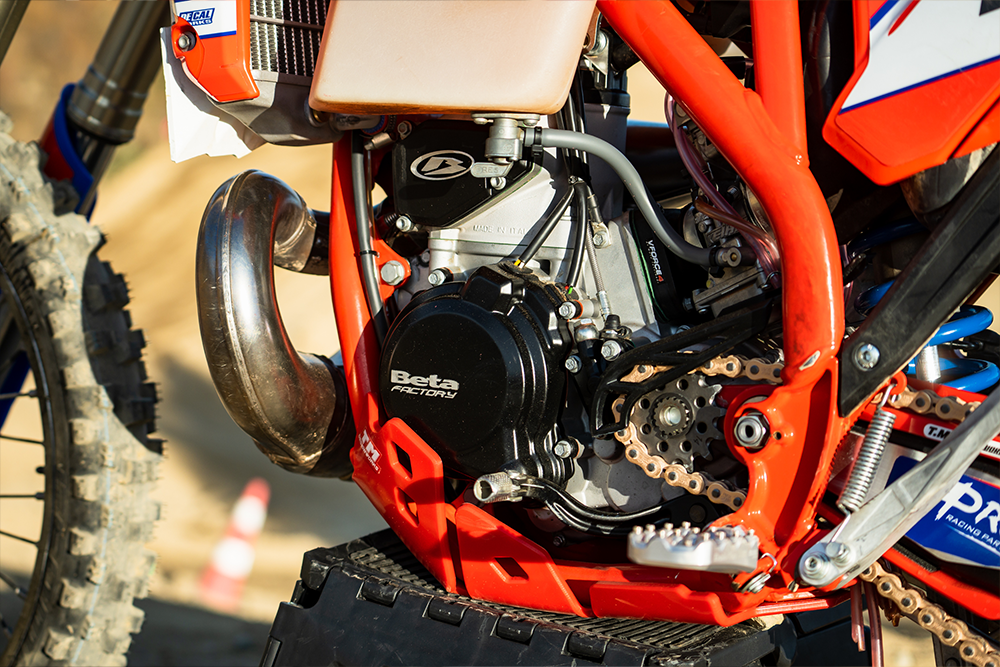
Compared to other 300’s, the Beta has a broad powerband that’s powerful and adequate. The bike can be lugged and is hard to stall, but doesn’t need to be short-shifted or revved to the moon. Earlier this year we compared the standard RR edition to this twin spark plug RE model and we’re quite amazed with the stark difference in power delivery which you can watch HERE.
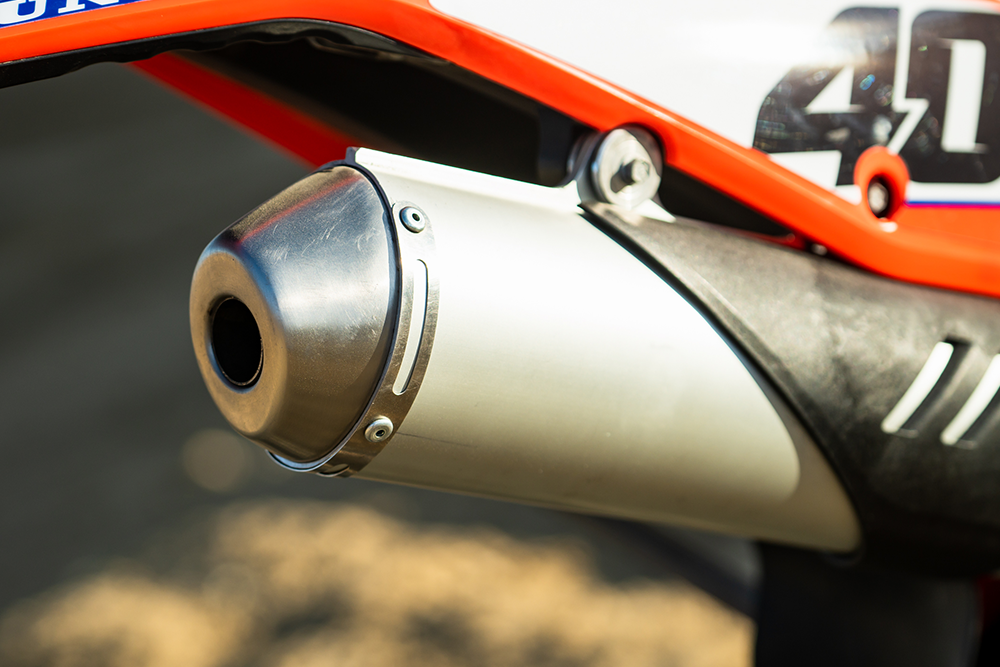
The bike has a moderate amount of flywheel that doesn’t inhibit its ability to loft the wheel or change direction at a moment’s notice, yet keeps the bike hooked up in limited traction situations. It’s amongst the most playful and responsive bikes in the class with a lightweight and slim chassis feel and crisp throttle response down low. The transmission has six speeds with a close 1-4 and a wider gap to 5th and 6th. The bike does need to be revved at least into the top-end for it to pull smoothly through some of those stock gaps, and we eventually changed the gearing to help tighten up the gaps. Top speed is comparable to other 300cc two-strokes – which is fast enough for most.
Since updating the clutch to a diaphragm spring in 2022, the engagement and consistency are on par with the best in the industry. The single-pull Domino throttle is one of the most precise and reliable units available and gives the bike a highly refined and connected feel.The Nissin brakes are liked by some and unfavored by others, but are overall quality components.
The ergos favor a short to medium framed rider while taller riders would appreciate a lower (and sharper) set of footpegs along with a taller seat for a more open cockpit.
The pipe mounts are old-school rubber block style brackets but given the slim pipe design, we avoided breaking any of the pipe mounts even when one of our riders got a little too close to a rock resulting in a sizable dent in the expansion chamber.
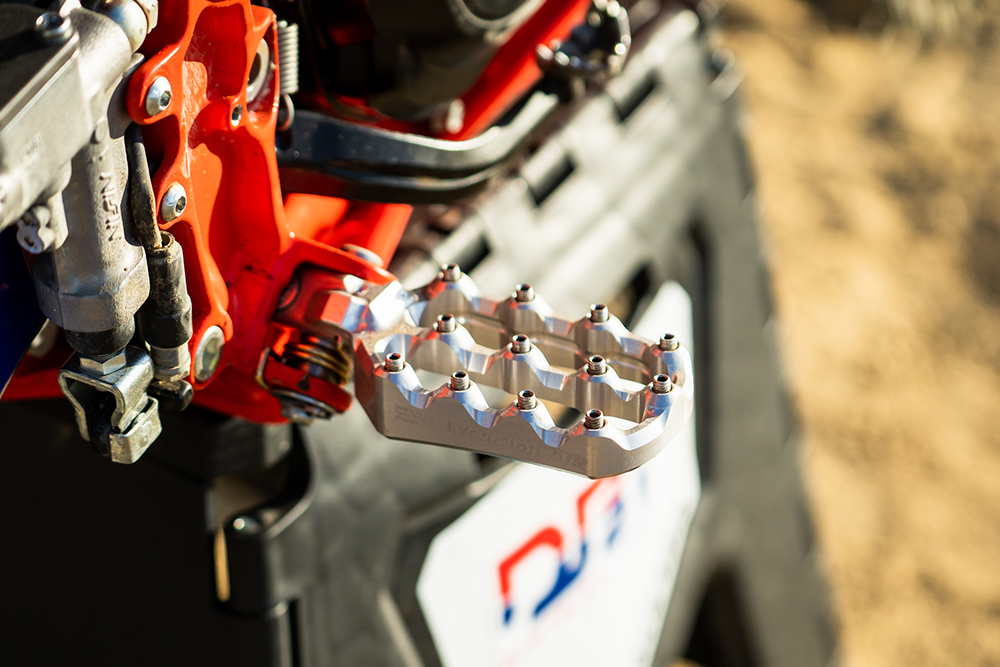
We left the new Beta in fairly stock trim but did find improvements in a few areas. The stock foot pegs look nice, but we found them to provide minimal traction and that quickly got worse as they wore. We actually prefer the pegs on the non RE models as the grip and durability is more to our liking. We added Evo-Air pegs from Fastway and ran them in the stock position. We’ve used a variation of these on many bikes and consistently find them to offer amazing traction while also providing excellent options to customize height, camber, and various inserts for different conditions.
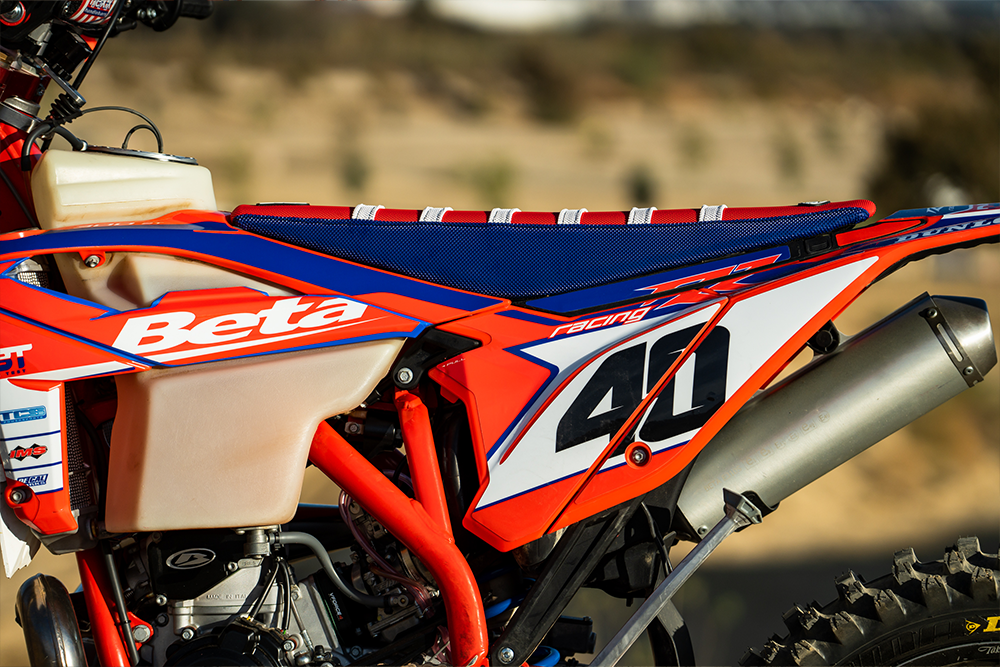
The next area of focus was comfort. We installed a complete replacement seat from Guts Racing as most of our riders felt the stock seat was a little low in height but also very thin, especially towards the back of the seat. We knew that feeling the seat pan through the foam would get a bit abusive in an event like this so we opted for their +30mm option to give us a little more cushion and open up the cockpit.
With similar goals, we also added Fasst Company Flexx Bars. We know from experience that hand fatigue and the often associated blisters can have a dramatic affect on the riders performance and consistency. The Flexx Bars do a great job reducing the sharpness from the countless square edges and make for a more comfortable and enjoyable ride.
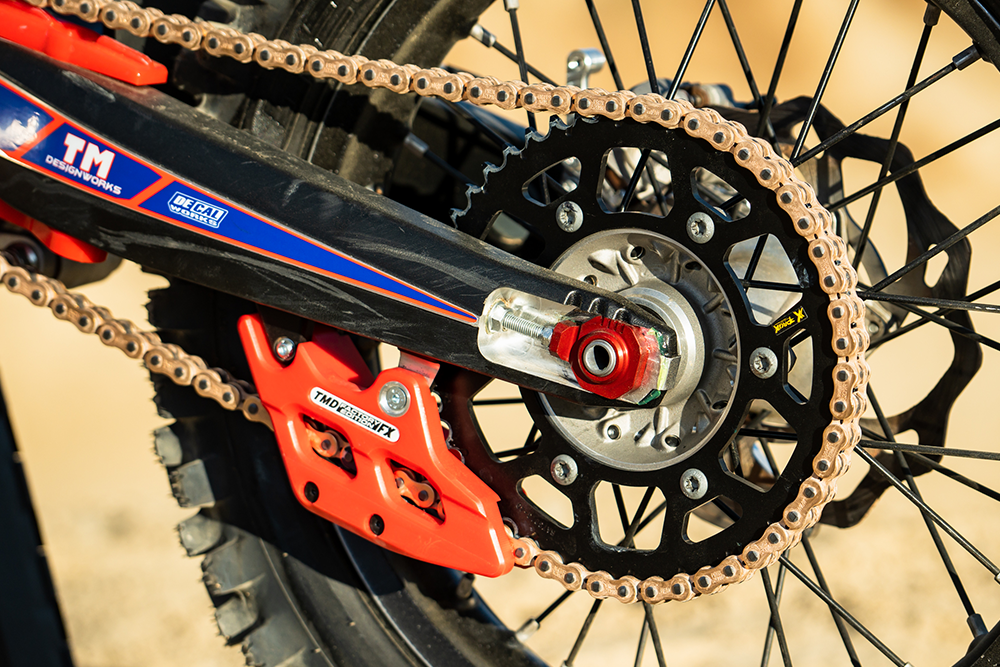
The new Beta runs really well but we felt the jetting was a little off, just off idle. We opted for a JD Jetting Kit and were pleased with the results. It cleaned up the lean condition we were feeling and made it just as responsive as any fuel injected two-stroke on the market while maintaining the much-loved reliability of a carburetor. For the powervalve, we kept the outer spring but removed the inner spring and positioned the adjuster all the way out. This gave the bike more hit and revved out quicker, which in turn allowed our riders to ride taller gears while still staying in the meat of the power. In addition, we experimented with silencer length. We had an extra one so we cut about 4” off the stock (very long) unit, re-riveted the end cap back on, and bolted it back on. We found it gave us a little more responsiveness, and though that may not be ideal for more technical enduro conditions, we liked what it did for the bike in faster corner to corner conditions typical of this event. Not to mention how good the bike sounded with this simple mod!
We also added two teeth to the rear sprocket (14/50T gearing) using a ProX x-ring chain and sprocket kit. We found the lower gearing allowed us to stay in the 3rd-4th gear range more often while still retaining plenty of top end speed with the overdrive like 5th and 6th gears.
The final, and potentially most dramatic area we tweaked was suspension and handling. The stock suspension was a bit soft for our average rider’s size as well as the terrain, but it worked surprisingly well. Still, we needed more reasonable springs and increased dampening to keep it higher in the stroke. We had Todd at TCS Powersports revalve the stock KYB components and it was just what we needed. He has plenty of experience with KYB suspension so he gave us a setting that would be better suited to the Glen Helen conditions and also be neutral enough to accommodate riders with weights ranging from 165 to 220 lbs, not an easy task. We were extremely happy with the results and aside from a couple clicks of fine tuning, we ran it as provided.
We also ran a XTRIG Preload Adjuster and grouped our riders in the riding rotation based on their weight. With that, we set the sag for the two lighter riders, then as we rotated into the heavier riders, we’d add “two turns” of preload to the shock to get the sag closer to where it should be for the heavier riders. We did this back and forth all race long with zero issues, and the one time we sent a rider out without doing it, he immediately came back in the next lap looking to make the change because of how big of a difference it made. With the XTRIG adjuster, the change is made in a matter of seconds so it is well worth the effort to adjust the sag when rider weights vary as much as they do.
The last change we made, and one of the most positive and dramatic, was the addition of a set of 22mm Ride Engineering Split Triple Clamps (stock offset is 20mm). We wanted to eliminate some harshness and try to find some more precision with the front end so we got a set just a few days before the race and really liked the results. The clamps improved the front end comfort tremendously, let the bike track better in the square edges, and gave the front end a more planted feel. With more time on the clamps, we feel we could’ve gone much stiffer on the suspension as we weren’t fighting through chassis harshness and a masked stiff feeling in the front end with the stock clamps.
In addition to the modifications mentioned, we installed a Precision Racing steering damper to relieve some fatigue and eliminate any head shake at speed. We used Blud lRacing Lubricants premix and gear oil with no oil change throughout the night or any lubrication issues in the engine.
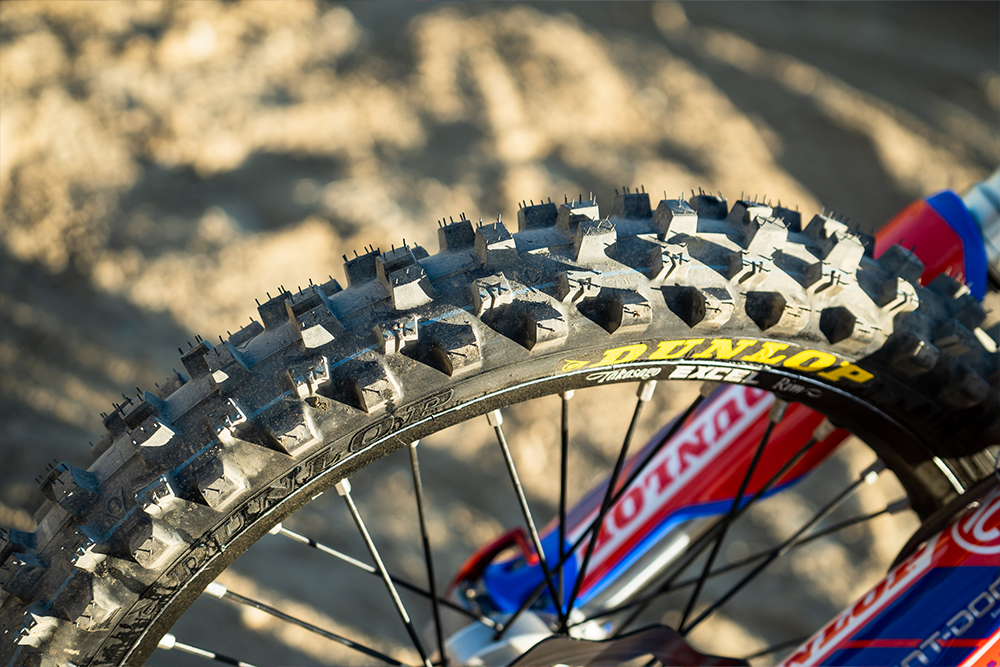
The only other thing a bike needs for 24 straight hours of competition is lights. For this we built a new custom light frame that holds a combination of KC HiLiTES components. The furthest distance was handled by a single Gravity Titan (Spot) and the mid to closer areas were lit by three separate Flex Era 1 pods. With this design we were able to aim the individual lights independently to create the desired pattern which is one of the smoothest light spreads we’ve used to date. All of the riders who have ridden with this setup have noted how “soft” the light is to your eyes and the detail you can see is some of the best.
Per usual, we ran the lights off separate power sources. The bike powered one of the Flex Era 1 pods (only 26w) while the rest ran off a separate battery. This design eliminated the need to modify the bikes stator to increase output, but also provided two completely separate lighting systems which can be incredibly valuable, and safer if there’s a failure with one source. You can find the batteries that we use HERE. To read more about powering lights on a bike, check out our Tech Tip articles HERE and HERE.
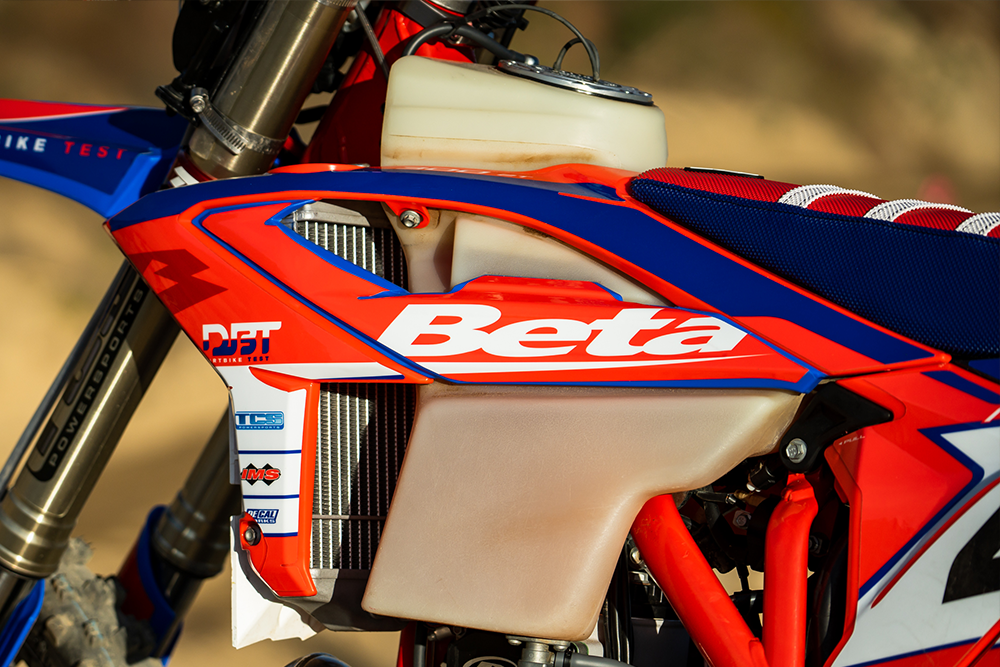
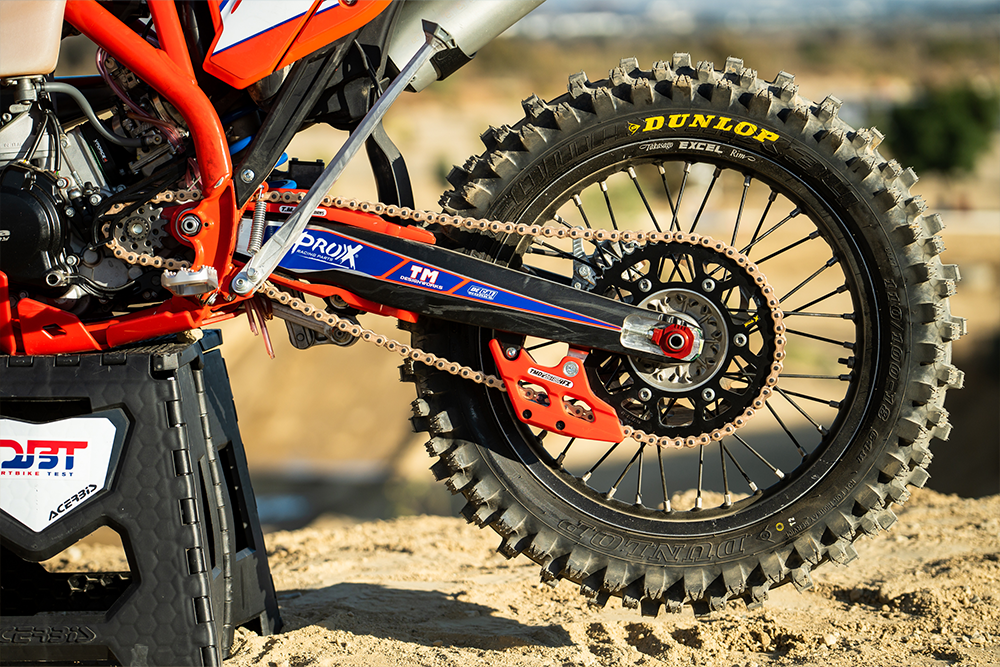
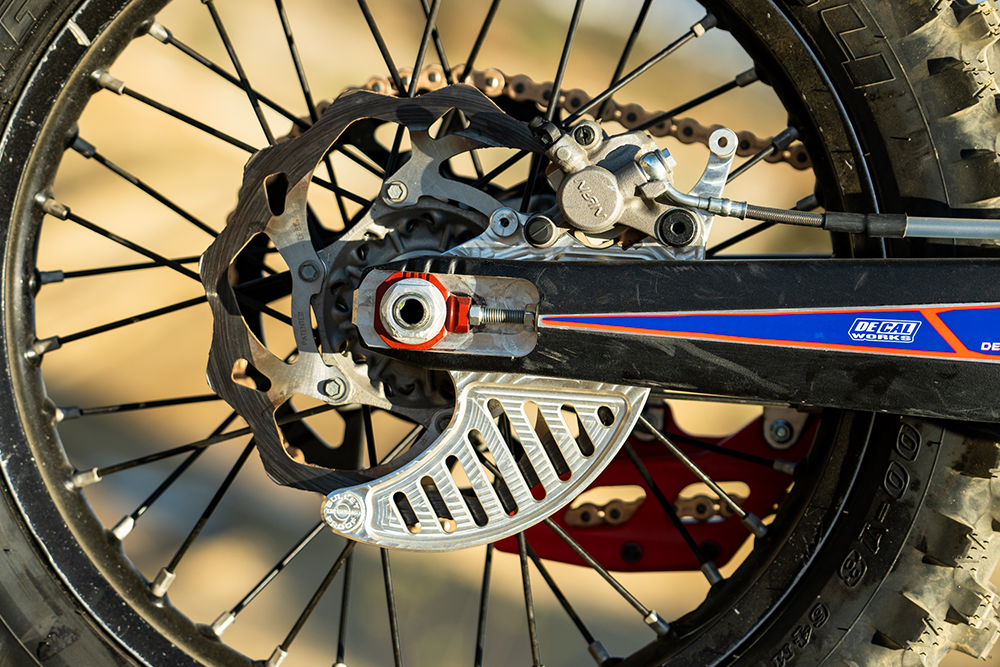
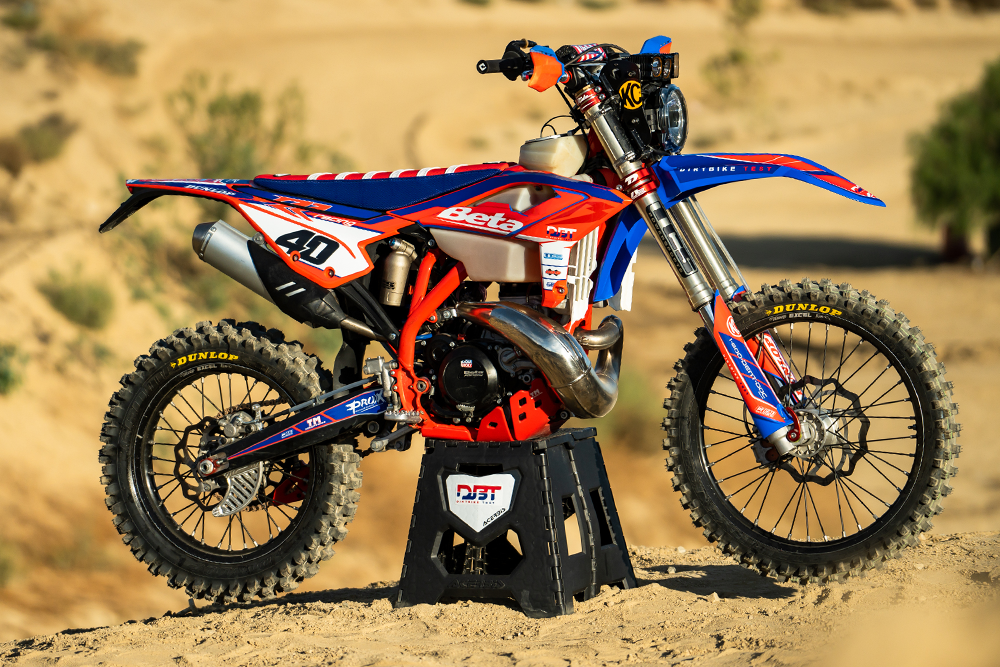
A little after 10:00 Sunday morning our Beta 300RR Race Edition crossed the finish line running as strong as ever. We completed 75 laps around the grueling 8 mile course (~600 miles) and finished 1st 40+ Expert and 14th O/A. The bike ran perfectly and everyone agreed it was one of the best bikes we’ve used at this event. We had one bolt come loose which had to be tightened but other than that, the only work we did during the race was swapping air filters, wheels, and rear brake pads. I’m confident that we could have rinsed it off, put some fresh tires on it, and started it all over. If only our sore bodies would allow it.
